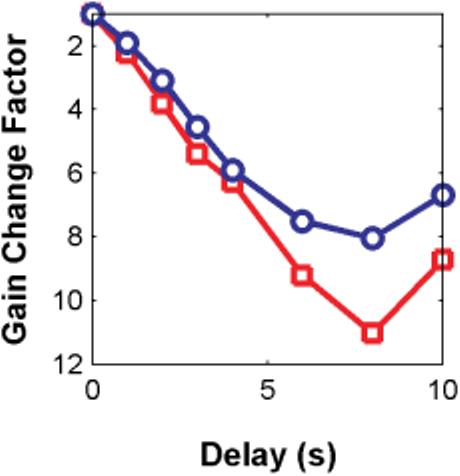Fig. 9.

Simulation of Murnick and Lamb's (1996) two-flash paradigm. A conditioning pre-flash presented at various times (delay) prior to a test flash caused a reduction in Tsat due to the test flash. The corresponding effective gain reductions induced by the pre-flash were estimated from the change in Tsat at each delay. Red: Estimated gain changes for Murnick and Lamb's toad rod data. Blue: Gain changes estimated in the same manner from the unified model responses. As in the data, the unified model generates substantial gain reductions due to the pre-flash, and these gain reductions increase in magnitude out to a delay of 8 s. However, the model did not produce as large a maximal gain change as observed in Murnick and Lamb—for the parameters used, the model generated a maximum estimated gain reduction of 8 times vs. 11 times in the Murnick and Lamb data. This quantitative difference between data and model is due to a surprising tradeoff between the dim-flash and bright-flash regimes—i.e. parameters that will yield optimal SPR reproducibility appear to be incompatible with those that permit the model to fully reproduce Murnick and Lamb's large gain changes. This tradeoff is addressed in the Discussion.
